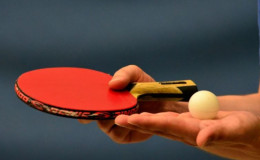
Golf is played over a series of holes called a golf course. Most golf courses are made up of 18 holes, but some have 9 holes. Each golf course is unique in size, shape, length, hazards, and terrain and each hole on a given golf course is unique.
Equipments
Balls:
Golf balls have a minimum diameter (1.68 inches) and weight (1.62 ounces) defined by the rules. The materials that the ball is made of will affect the characteristics of the ball when hit.
Shaft:
- The shaft is a narrowed tube made of metal (usually steel) or carbon fiber composite (referred to as graphite).
- The shaft is roughly 0.5 inches (13 mm) in diameter near the grip and from 34 to 48 inches (86 to 122 cm) in length.
- Shafts weigh from 45 to 150 grams (1.6 to 5.3 oz), depending on the material and length.
Hole
- Hole: The hole is a cup that is inserted into the ground. There is a flag that sticks out of the hole to allow golfers to see it from a distance.
A golf hole has the following major components: - Tee Area: This is where play begins. The golf ball may be placed on a tee for the first shot of the hole.
- Fairway: The main area between the tee and the green. The grass is cut shorter on the fairway to allow easier shots. Golfers try to keep the ball in the bounds of the fairway when they are between the tee and the green.
- Green: This is the area where the hole is located. The grass on the green is cut short and greens are smooth to allow the ball to roll when putted.
Scoring
Par
The key factor for classifying the Par of a hole is the distance from the tee to the green.
- A typical par-3 hole is less than 250 yards (225 m) in length.
- A par-4 hole ranging between 251 and 475 yards (225–434 m)
- A Par-5 hole is longer than 475 yards (435 m). The rare par-6s can stretch well over 650 yards (595 m).
Points
In every form of play, the goal is to play as few strokes per round as possible. A hole in one occurs when a golfer sinks his ball into the cup with his first stroke from the tee. Common scores for a hole also have specific terms.
Numeric term Name Description
−3 Albatross three strokes under par
−2 Eagle two strokes under par
−1 Birdie one stroke under par
E Par equal to par
+1 Bogey one stroke over par
+2 Double bogey two strokes over par
+3 Triple bogey three strokes over par
Basic forms of golf
Match play
- In match play, two players (or two teams) play each hole as a separate contest against each other.
- The party with the lower score wins that hole, or if the scores of both players and teams are equal the hole is ''halved'' (or tied). The game is won by the party that wins more holes than the other.
Stroke play
In stroke play, the score achieved for each and every hole of the round or tournament is added to produce the total score, and the player with the lowest score wins.
Types of golf shots played in golf’s
- Tee shot: This shot is often made with a driver off a tee for long golf holes, or with an iron on shorter holes
- Fairway shot: This golf shot is similar to a tee shot, with similar goals, but a tee may not be used.\\
- Bunker shot: This shot is taken from the bunker or sand trap. Typically an iron with a high pitch or sand wedge is used for this shot in order to be sure to get the ball up and out of the trap.
- Pitch or Fop: These are high approach shots that makes the golf ball fly high and roll very little, stopping more or less where it hits the ground.
Rules and Regulations
- You must play the golf ball where it lies.
- The golf course may not be changed to gain an advantage.
- If your ball is in a bunker or water hazard, your golf club cannot touch the ground or water prior to your actual swing. If it does, you must take a penalty stroke.
- If you accidentally play the wrong golf ball, you get a two stroke penalty.
- On the green, you may mark and lift your ball to clean it or get it out of another golfer''s way.
- When putting the ball in the hole it must not hit the flag. If the golf ball does hit the flag, it is a two stroke penalty.
- If you lose the ball in a water hazard, you can drop the ball behind the hazard and in line with the golf hole. You must take a penalty stroke.
- If you lose the ball out of bounds, you can take a penalty stroke and then replay the shot.
- If your ball is unplayable, you may take a penalty stroke and then drop the golf ball behind where the ball was and in line with the hole or drop the golf ball within two club lengths.
- You are allowed a maximum of 14 clubs in your golf bag.
- Golfers must tee off behind and between the tee markers.
Men''s major championships
- The Masters
- U.S. Open
- The Open Championship
- PGA Championship
- British Amateur
Women''s major championships
- Kraft Nabisco Championship
- LPGA Championship
- U.S. Women''s Open
- Women''s British Open
- LPGA of Japan Tour
Governing Bodies
- The Royal and Ancient Golf Club of St Andrews
- United States Golf Association










